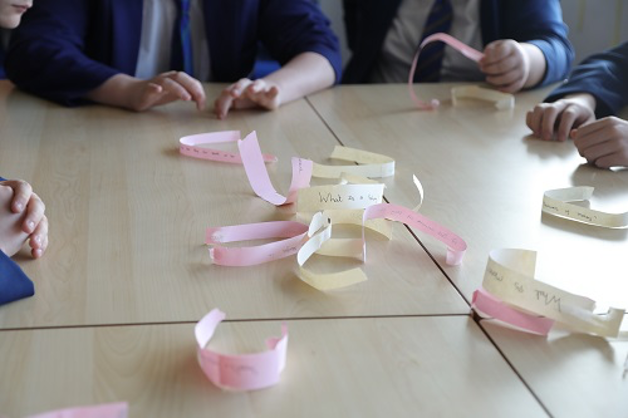This year, we are all being urged to put up our Christmas decorations early to disperse the 2020 Covid gloom and to cheer ourselves up. This sounds like a great idea to me and, in many of the schools I have manged to visit recently, the decorations are already starting to appear.
How about using the decorations to promote learning and not just for their aesthetics? Paper Chains are easy and fun to make but can also be used to consolidate key learning and are ideal for retrieval practice.
Create the chains as usual but ask each child to write a question on one link and an answer on another. Ensure that the questions and corresponding answers are split up when the chains are fully assembled. Rather than questions and answers, you might choose to record key terms and their definitions. Different-coloured paper strips are also helpful e.g. questions on red and answers on green.

In January, reintroduce the paper chains by unleashing them from the ceiling/ walls and inviting pupils to carefully disconnect them. Next, challenge pupils to to make something new from the paper strips – for example, connecting questions with their correct answer or matching terms and definitions.

Effective variations could include:
- a competitive element by dividing the class into teams to see who can create the most challenging or imaginative set of links based on any aspect of the term’s learning.
- Or who can create the longest paper chain the quickest, perhaps beginning in opposite corners of the room.
- Increasing the levels challenge by stipulating that once a word has been added to the chain any pupil in that team can be challenged, by the teacher or by the opposing team, to demonstrate their understanding of it.
See the book ‘Dynamically Different Classrooms’, co-written with Jan Evans, for a detailed case study of how this technique was used in KS 4 MFL and for 150 other strategies for using your classroom environment actively.
